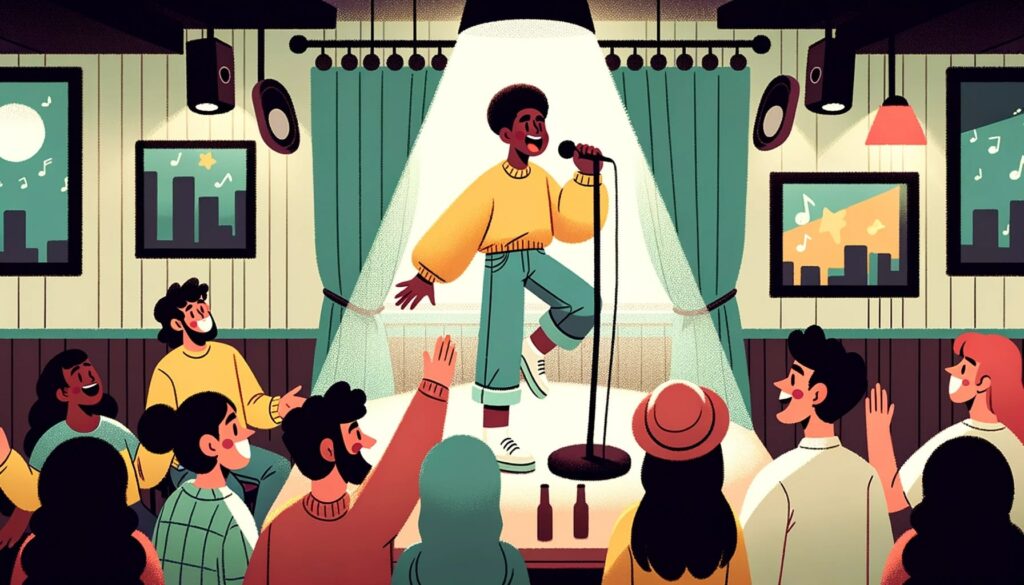Every year, we interview hundreds of professional event organizers to get an idea of event promotion trends for the upcoming year. We also analyze data from the 30,000+ events we’ve promoted. In addition to our own data and research, our team at Vesta is digging deep reading other industry reports and talking with thousands of event organizers annually to come up with these useful event industry statistics.
This post is a collection of some up-to-date and fresh statistics about events in 2024 we find insightful.
41 Event Industry Statistics (Updated for 2024)
2024 Event Attendance Statistics
Most event organizers said that attendance has either stayed the same or gone up since the beginning of 2023. Source: Vesta 2024 Event Trends Promotion Report.
Attendance declined between 2017 and 2022 across all categories except “other” music/dance/theater events. The average decline was 30-50%. Source: National Endowment for the Arts Arts Participation Patterns.
Open-air facilities like parks and pavilions were the most popular venue for arts events in 2022, with 17% of adults attending events there. Source: National Endowment for the Arts Arts Participation Patterns.
Nature and outdoors event attendance grew globally by 25% in 2023, compared to the same period in 2022. Source: Eventbrite 2024 TRNDS Report.
75% of 21- to 35-year-olds feel more positive about events that enable them to connect with nature. Source: Eventbrite 2024 TRNDS Report.
Attendees at organizations serving a community of color spend an average of $38.29 per person per event—virtually identical to the overall national average of $38.46. Source: Arts and Economic Prosperity 6 Study (AEP6)
48% of adults attended at least one arts event in person in 2022. Attendance for virtual/online arts events would likely be higher. Source: National Endowment for the Arts Arts Participation Patterns.
Attendance increased by 41% between 2017 and 2022 for music, dance, or theater events not specified in the survey, such as rock concerts, hip hop shows, comedy/improv, etc. Source: National Endowment for the Arts Arts Participation Patterns.
Most event organizers say that there is a good balance of events in 2024 and don’t feel that there is too much competition. Source: Vesta 2024 Event Trends Promotion Report.
61% of 21- to 35-year-olds say 2024 will be a “Year of Adventure” – they want to experience new things, explore new places, and live their best lives. Source: Eventbrite 2024 TRNDS Report.
Low- and no-alcohol events grew globally by 73% on the Eventbrite platform between January and September 2023 compared to the same period in 2022. Source: Eventbrite 2024 TRNDS Report.
2024 Event Promotion Statistics
The average number of different promotional methods that event marketers used rose from 4.79 to 6.5 in 2023. Source: Vesta 2024 Event Trends Promotion Report.
The majority of event organizers said that they do their marketing internally instead of using a marketing agency for events. Only 6.25% said that they use a marketing agency for their events, but all said that they only use the agency for some of their promotional activities. Source: Vesta 2024 Event Trends Promotion Report.
Over 75% of event organizers say they are using some kind of marketing automation to make their operations run more efficiently. Source: Vesta 2024 Event Trends Promotion Report.
In terms of total tickets sold, organic social media and email marketing dominate for events. This points to the fact that your best results will often come from marketing to people who already know you. Previous attendees are the most likely to convert, so it is important to manage your social media and email channels effectively. Email marketing was down 8% over last year, however, with organizers citing deliverability issues. Source: Vesta 2024 Event Trends Promotion Report.
Social media was cited by 17% of adults as how they first learned about an arts event they attended, the top source along with friends/family. Source: National Endowment for the Arts Arts Participation Patterns.
Social media, unpaid organic did see a small 9% drop in usage among event organizers using the channel for event marketing compared to 2023. A drop of 22% of event organizers polled said they plan on increasing time and budget for organic social media in 2024. This budget and time is being reallocated to paid marketing channels. Source: Event Vesta 2024 Event Trends Promotion Report.
On average, event organizers surveyed said they spend $776 per event on paid advertising channels. They spend 18.61% more on traditional advertising channels like Radio, Billboards, and Television than digital advertising like Facebook Ads and Google Search ads. Source: Vesta 2024 Event Trends Promotion Report.
2024 Event Operations Statistics
60% of organizers intend to increase their ticket prices in 2024. Source: Eventbrite 2024 TRNDS Report.
Average ticket price in 2024 is $41.90 with bigger organizations charging $59 on average vs the $19 on average smaller organizations charge. Many event organizers cited needing to raise their ticket prices for the first time in many years to keep up with rising costs. Source: Vesta 2024 Event Trends Promotion Report.
The most commonly used ticketing software in our report was Eventbrite with 45.83% of event organizers saying they use the popular software. The other 54.17% was evenly split between over 20 other ticketing and registration software options. Source: Vesta 2024 Event Trends Promotion Report.
On average, they have two additional sources of revenue besides ticket sales. The average additional revenue per attendee is $26.62, adding an additional 63% to their total revenue per attendee. Source: Vesta 2024 Event Trends Promotion Report.
Attendees at nonprofit arts and culture events spend $38.46 per person per event beyond the cost of admission, benefiting local merchants and businesses. Source: Arts and Economic Prosperity 6 Study (AEP6)
One-third (30.1%) of attendees travel from outside the county in which the activity takes place, spending an average of $60.57, twice that of their local counterparts ($29.77). Three-quarters (77%) of nonlocal attendees reported that the primary purpose of their visit was to attend that cultural event. Source: Arts and Economic Prosperity 6 Study (AEP6)
Attendance at events mentioning “VIP” grew globally by 18% on the Eventbrite platform between January to September 2023 compared to the same period in 2022. Source: Eventbrite 2024 TRNDS Report.
Most organizers say that staffing shortages have gotten better in 2024. One venue said they struggle to find strategic thinkers. A few organizations are still struggling to find enough bartenders and seasonal staff, but most say that the staffing shortages of 2022 and early 2023 are gone for now. Source: Vesta 2024 Event Trends Promotion Report.
Only 46.87% of event organizers say that they have used tools like ChatGPT to help with various tasks. Source: Vesta 2024 Event Trends Promotion Report.
Inflation is hurting more than 65% of event organizations. They say that they are needing to increase ticket prices and find new sources of revenue to keep up with the rising cost of goods, services, and wages. Some are hosting less events to make up for the increased cost. Others have seen success raising ticket prices or adding new sponsorships. Source: Vesta 2024 Event Trends Promotion Report.
15.63% of event organizers said they are still doing hybrid or virtual events in 2024. The most popular platforms are Zoom and Instagram Live. Hybrid events among the responding event organizers was 13.78% lower than 2023’s report. Source: Vesta 2024 Event Trends Promotion Report.
Arts Participation Statistics
86% of Americans say arts and culture are important to their community’s quality of life and livability. Source: Arts and Economic Prosperity 6 Study (AEP6)
89% of attendees agreed that the activity or venue they were attending was a source of neighborhood pride for the community. Source: Arts and Economic Prosperity 6 Study (AEP6)
Nonprofit arts and culture organizations generated $151.7 billion of economic activity in 2022. This includes $73.3 billion in spending by arts and culture organizations and an additional $78.4 billion in event-related expenditures by their audiences. Source: Arts and Economic Prosperity 6 Study (AEP6)
52% of adults created and/or performed art in 2022, slightly higher than the 48% who attended arts events. Source: National Endowment for the Arts Arts Participation Patterns.
78% of the population say the arts are a positive experience in a troubled world. Source: Arts and Economic Prosperity 6 Study (AEP6)
Conclusion
The trends we’ve analyzed for 2024 reveal significant shifts in event promotion, providing both challenges and opportunities for event professionals.
Here are some key takeaways from the data:
- Attendance Trends: Most event organizers reported stable or increased attendance since 2023. Despite previous declines, some categories, especially open-air and nature-related events, are seeing growth.
- Venue Preferences: Open-air facilities like parks and pavilions have become more popular, reflecting a broader trend towards outdoor and nature-connected events.
- Demographic Insights: Younger audiences (21-35 years old) show a strong preference for nature-connected experiences and are looking for new and adventurous events.
- Marketing Strategies: There’s a notable increase in the use of marketing automation, although fewer organizers are using tools like ChatGPT. Traditional advertising still holds value, but there’s a shift towards digital channels.
- Financial Adjustments: Many organizers are raising ticket prices to cope with rising costs, while also seeking additional revenue streams such as sponsorships and VIP experiences.
- Social Media and Email Marketing: Organic social media remains a key discovery tool for events, but there’s a slight decline in its usage. Email marketing, while effective, faces challenges like deliverability issues.
- Operational Changes: Staffing shortages have improved overall, but some roles remain difficult to fill. Inflation continues to impact budgets, prompting strategic adjustments in event planning and pricing.
- Technology Utilization: The majority of organizers manage their marketing internally, with only a small fraction using agencies for specific promotional activities. The most popular ticketing platform remains Eventbrite, though many other options are also in use.
Understanding these trends can help event organizers make informed decisions about their promotional strategies and operational planning for 2024. Adapting to these shifts will be crucial for continued success in the dynamic landscape of event promotion.
Want help promoting your events and advice on how to make your events more exciting? Schedule some time with us to learn how we can help with promotion for your brewery.












